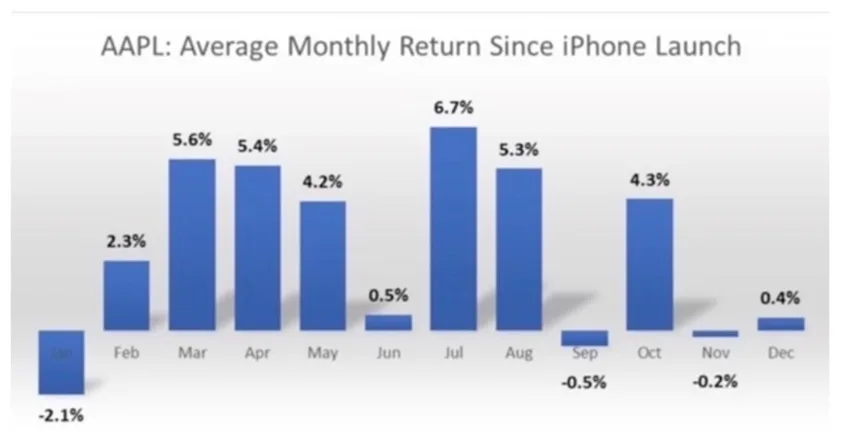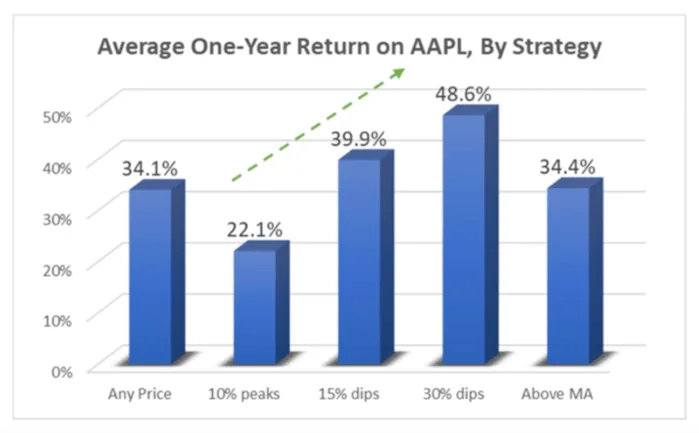It is time for Apple to unveil yet another version of its flagship tech device. The iPhone 14 will see the light of day on September 7, during the company’s product launch event that starts at 10 a.m. Cupertino time.
Should investors take advantage and buy Apple stock ahead of this important date? We discuss below the risks and opportunities.

iPhone 14: another success story?
It is undeniable that Apple’s smartphone has been a success story, even 15 years after the late Steve Jobs introduced the original model. While the Cupertino company joined the 5G party at least one or two years late, with the launch of the iPhone 12 in 2020, Apple has certainly caught up with the competition as sales and market share gains have impressed in the past 24 months.
At least one analyst believes that the iPhone 14 will maintain the status quo — in the best way possible. Wedbush’s Dan Ives, who recently bumped his price target on AAPL to $220 for about 38% upside opportunity, sees demand staying near a peak.
The analyst has recently stated that, per his channel checks, iPhone 14 initial orders should remain at about 90 million units, in line with last year’s iPhone 13. If true, this will be impressive, in my view, considering the many headwinds: fears over lower consumer spending, global economic growth deceleration, and lingering supply chain constraints.
Even some of the bears seem to believe that the iPhone 14 will lend further momentum to Apple’s 5G cycle. ItauBBA’s Thiago Kapulskis is perhaps the only sell-side analyst to have an underperform rating on Apple shares. He fears that the new Pro and Pro Max models will see an inflation-driven $100 bump in price that may not even hurt demand for the portable device. In fact, the expert sees the iPhone 14 as a key risk for his bearish thesis on the stock.
But what about Apple stock?
One thing is the debate over how well the iPhone 14 will perform in the holiday season and into next year. A very different topic of conversation is whether strong financial results, if they come to fruition, will help to push Apple stock higher from the current levels of about $159 apiece.
When it comes to share price movement, iPhone launches have historically triggered more bearishness. The chart below shows that AAPL tends to outperform during the spring and early summer months. But once the new iPhone is announced, investors seem to “sell the news” and cause Apple stock to underperform into the end of the year, all the way through January.

I believe that the prospects for Apple investors look even worse in the short term if one considers the current mood of the markets. The S&P 500 rallied during parts of July and August, only to set up yet another pullback later August. The story is all too familiar to equity investors: record-high inflation continues to pressure the central banks to keep raising interest rates, which is bad news for most risk assets.
For these reasons, I think that the iPhone 14 event is most likely to coincide with share price weakness. However, I would encourage long-term investors to think past the short-term challenges — and maybe even consider buying AAPL on weakness, should the stock price dip in the next few weeks.
Keep in mind that, historically, buying AAPL on dips has consistently produced better 12-month returns (see chart below). At this moment, shares are only about 13% below all-time highs. A discount of another few dollars, however, could present a good opportunity.

